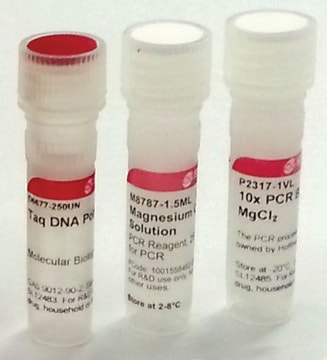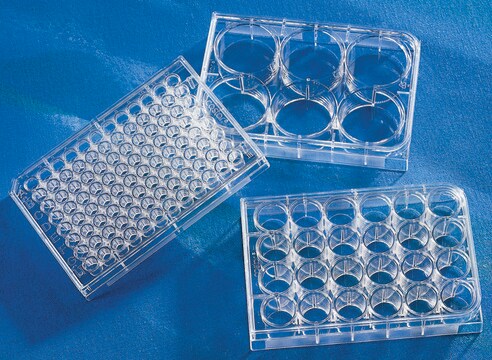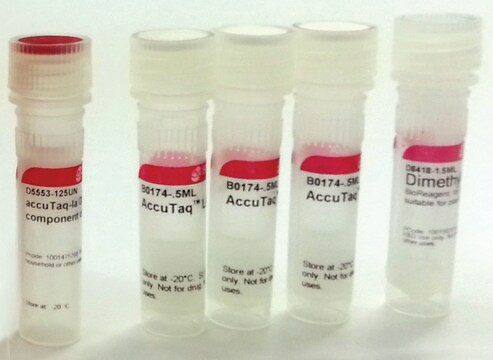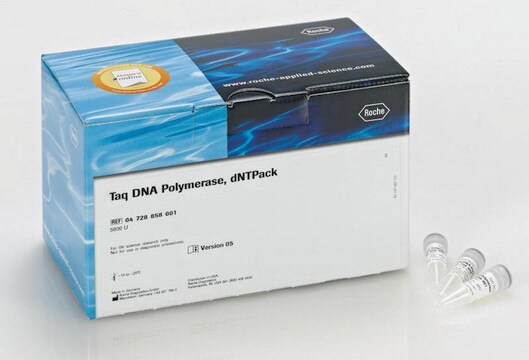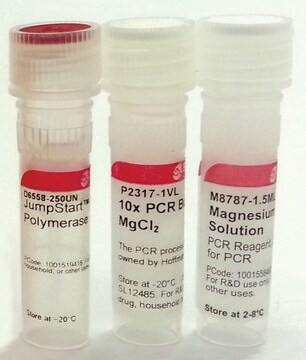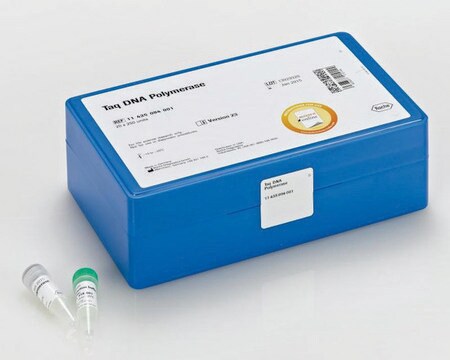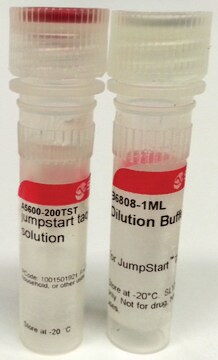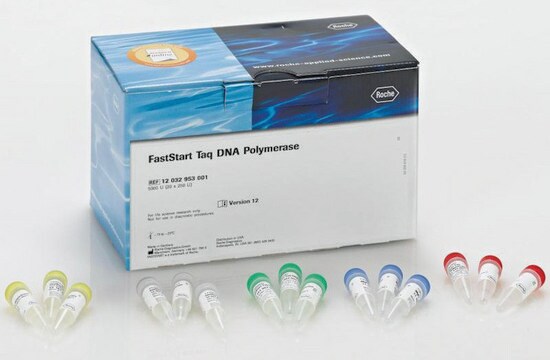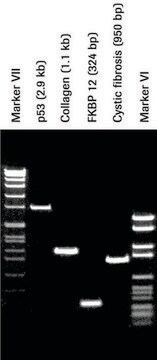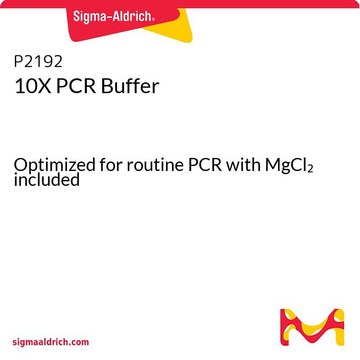D7442
MTP™ Taq DNA Polymerase
Taq DNA Polymerase, free of DNA contaminants
Synonym(s):
DNA-free Taq DNA polymerase
About This Item
Recommended Products
form
liquid
usage
sufficient for 1500 reactions
sufficient for 250 reactions
feature
Difficult Templates/Specialty Enzymes PCR
High Fidelity PCR
dNTPs included: no
hotstart: no
concentration
5 unit/μL
technique(s)
PCR: suitable
color
colorless
input
purified DNA
suitability
suitable for PCR
shipped in
wet ice
storage temp.
−20°C
General description
Contaminating DNA present in most other polymerase preparations often preclude or obscure the accurate interpretation of results, especially when targeting conserved sequences, e.g., bacterial 16S rRNA region. Through Sigma′s proprietary DNA removal methods and strict quality control standards, we can ensure the absence of the most commonly found contaminant DNA. Each lot of MTP Taq is assayed using PCR and primers specific to the conserved region of bacterial 16S rRNA, the Taq expression vector, and the human β-actin gene.
While MTP Taq ensures a high-quality, low contaminant DNA polymerase for reliable PCR amplification, DNA contaminants can be introduced into PCR through a number of other reagents. To further minimize the risk of contaminant DNA during PCR, we include 10× MTP Taq Buffer with each tube of MTP Taq DNA Polymerase. Each lot of 10× MTP Taq Buffer undergoes the same strict quality control testing as MTP Taq DNA polymerase to ensure the absence of contaminating DNA. To prevent false positive PCR results, only DNA-free reagents should be used in PCR reactions with MTP Taq DNA polymerase.
Application
- for the amplification of bacterial 16S rRNA genes from purified DNA
- bacterial genome analysis
- pathogen detection
Biochem/physiol Actions
Features and Benefits
- Low contaminant DNA polymerase
- Prevents false positive PCR results from contaminating bacterial DNA
Components
- MTP Taq DNA Polymerase (D7067)
- 10x MTP Taq Buffer (M9943)
Unit Definition
Other Notes
Legal Information
Hazard Statements
Precautionary Statements
Hazard Classifications
Aquatic Chronic 3
Storage Class Code
10 - Combustible liquids
Certificates of Analysis (COA)
Search for Certificates of Analysis (COA) by entering the products Lot/Batch Number. Lot and Batch Numbers can be found on a product’s label following the words ‘Lot’ or ‘Batch’.
Already Own This Product?
Find documentation for the products that you have recently purchased in the Document Library.
Customers Also Viewed
Protocols
Method for bacterial genome analysis and detection of pathogens. Minimize false positive PCRs through lab design and reagents tested for use in bacterial PCR applications.
Method for PCR amplification of Bacterial DNA with low contamination using MTP™ Taq DNA Polymerase (D7442)
Our team of scientists has experience in all areas of research including Life Science, Material Science, Chemical Synthesis, Chromatography, Analytical and many others.
Contact Technical Service
